Complete with a dedicated army of Stormtroopers, Autodesk’s 23rd annual learning and networking event, held in Las Vegas last December, was certainly one to remember. By Martyn Day
Autodesk University is always big on showmanship but it will be hard to top this December’s event, which was infiltrated by an army of Imperial Stormtroopers, fresh from their exploits in Star Wars Force Awakens. In theory, they were hired to keep the rabble in line, although some were spotted taking classes, perhaps trying to perfect their major weapon, the Death Star, and finally design out the flaw that the Rebels always manage to exploit. Maybe with Autodesk’s software they will have more luck with revision 4.
Any lessons learnt constructing intergalactic space stations could soon be applied to the real world. Autodesk is on a course to connect its software with digital fabrication in manufacturing and, now, AEC. The design process, as it is today, with dedicated phases of design, documentation and fabrication are hangovers from CAD replicating a tried and tested process but not recognising that design can bypass the middle stages and integrate with the actual production of parts. This is very obvious in manufacturing but perhaps less so in AEC. However, with the growing adoption of 3D and Building Information Modelling (BIM) processes in building, projects are now starting to lend themselves to being able to benefit from off-site digital fabrication.
In his keynote address Autodesk Chief Executive Office (CEO) Carl Bass recalled a visit the new Apple HQ, One Infinite Loop, a Foster+Partners building that is well on it way to completion.
Mr Bass witnessed the laying of paving slabs in the car parks and noted that each slab was manufactured off site and had a unique identifier and RFID tag. Suddenly the building was an assembly of parts, not unlike any other manufactured product. Steelwork is already being precision cut and rapidly delivered, using their ability to cut costs but offer quicker delivery as a major competitive advantage.
Chief Technology Officer (CTO) Jeff Kowalski had two impressive demonstrations of the company’s Project Dreamcatcher technology. Dreamcatcher is Autodesk’s big differentiator to the other CAD companies. It is working towards delivering design tools that can assist in the design process, to the point that the solutions it delivers exceed the best designs possible from an ‘unaided’ designer.
Using Dreamcatcher, engineers would benefit from the algorithms having deep knowledge of structural forms from the world of biology, understanding the crystalline structures of materials, 3D print methods and being able to only provide solutions that fulfil the design constraints. This is truly using a computer as an amplifier of the mind and will be eventually available for manufacturing and building design.
The first example Kowalski gave was of a car chassis design. Having built a high-power racing car, it was fitted with telemetry sensors and driven multiple times around tracks it would be used on. Taking the forces and shocks that the car actually experienced into Dreamcatcher, the system iteratively analysed and modelled an organic looking chassis that would offer the best weight for strength for the constraints supplied. The end result was a unique chassis – that could probably only be manufactured through 3D printing.
The second examples was of an Airbus partition cabin wall. Applying Dreamcatcher to the design essentially solved the internal structural layout, given the forces and constraints. The system used generative design to run through thousands of possible solutions and compared these to the base criteria. The end ‘bionic’ result was a pretty unusual looking lattice, which was 3D printed in metal.
The algorithms mimicked cellular structures found in bone, enabling a lightweight and strong design that would not have ever been possible by any traditional process. Airbus has since fitted the part to a plane and proven it fits the purpose. The lightweight structure could enable huge jet fuel cost savings. Mr Kowalski didn’t say how much it cost to develop or manufacture, one would assume that it was a pretty expensive solution to the problem as a one off.
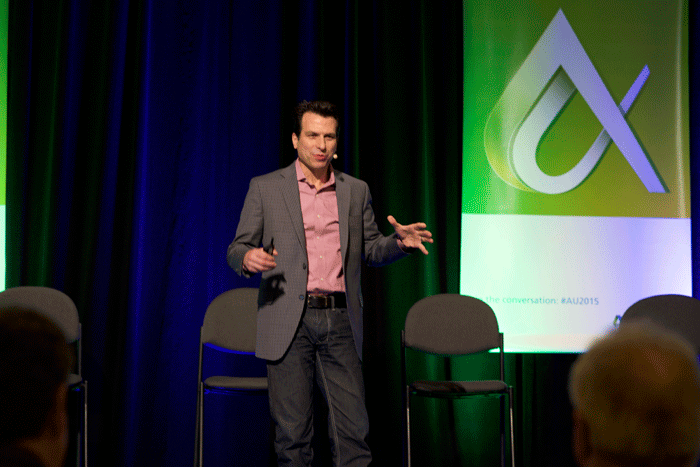
May the Forge be with you
Autodesk made a big umbrella announcement that featured only a few details. Forge is a new Autodesk development platform (PaaS – Platform as a Service) with a $100 million fund to assist the next generation of third party developers work with Autodesk’s solutions.
Forge runs on Amazon Web Services and on Autodesk’s own server centres, which are currently in development. This cloud platform is a single place where Autodesk’s products and services are available for access by third party developers through their APIs and SDKs. Over the past five years Autodesk has been rewriting or creating new web-based platforms, such as 3D rendering, model collaboration (A360) and DWG read/write as componentised ‘web services’, which all of its cloud-enabled applications can call on when functionality is needed. Now developers will be able to hook into Autodesk’s PaaS and integrate or build new applications to focus on specific markets. This will enable third parties to develop cloud-based add-ons to Autodesk’s next generation of tools, which could also be hosted on Autodesk’s servers.
Autodesk is looking to attract start-ups to Forge and pay for development work in key markets. The focus, we are told, will mainly be in the manufacturing segment.
Revit and the cloud
There was not a lot of news on Revit development with the focus primarily on collaboration and document management, which we will come to next. However we did pick up some more chatter on our revelations in the last issue that Autodesk is working on a new generation replacement for Revit, in the same way its Fusion360 application is to replace Inventor.
Revit’s software architecture is not really designed to make use of today’s computing power, let alone the future’s, and its data structure is less than ideal for large models or streaming over the web. If you look at Fusion360, it runs in a browser, on a PC or Mac, has relatively low local system requirements, is highly multi-threaded and can be accessed from any device from anywhere.
Rewriting Revit for the cloud would be a major undertaking. However, Autodesk’s development teams have been moving chunks of common functionality up into the cloud for years, so the actual process will be completed “quicker than you think” as many of the required functionality building blocks are already there for the Revit team to hook into (BIM 360, Glue, Rendering, DWG, A360, analysis etc).
It will be interesting to see how Autodesk deals with potential legacy models and how the existing intelligence and object classifications are ported to any new system.
While it is great that Revit is now gaining traction, many expert users want much more capability and power. Autodesk has long been aiming to move to Subscription and Cloud and Revit appears to have been bumbling around in a bit of a cul-de-sac.
For now it’s well worth downloading a trial of Fusion360 just to see how its cloud architecture benefits from modern code and is literally ‘everywhere’.
New World Order
As we pointed out in the last issue, Autodesk’s big launch, or pre-launch, was the beta of BIM 360 Docs, formerly known as Project Alexandria. This cloud-based document and model management service is built on top of the BIM 360 technology stack, which includes Glue and Field. While essentially focused on the document management part of the process, you can see Autodesk setting its sights on fleshing this out to manage projects and compete against Bentley ProjectWise, but here Autodesk has to learn to walk before it can run.
BIM 360 Docs is a permissions-based online 2D/3D repository, providing mobile connected access with version control, redline/markup, collaboration with audit trails and some elementary workflows. In many ways it replaces Buzzsaw, which I was told ‘will exist as long as people want to use it’ but the writing is ‘on the cloud’ for that service.
Autodesk states the product will feature:
Linked 3D and 2D experience, allowing users to interact with models in 2D views and visualise them in 3D on the same page, and vice-versa
Permission-based access control and approval processes to manage the updating and release of documents, preventing project teams from working from out-of-date information
Blazing-fast viewing experience for large-format PDF design documents, optimised for Apple iOS devices; and Automated organisation of original and updated construction docs into sets, including highly accurate and customised optical character recognition (OCR) of title blocks.
BIM360 Docs is currently in limited free preview and is expected to launch properly in early 2016.
Stingray
By far the most fun interactive display was one called ‘Live Design’ which demonstrated a new technology combination that Autodesk will be bringing to market very soon and will enable designers to bring their models into VR worlds for interactive exploration.
Stingray is a real-time 3D games engine that Autodesk acquired and is integrated with 3ds Max, Maya, and Maya LT software. Revit models can be imported to Max for prepping for use within a Stingray environment. Once loaded, it is possible to walk through the model in a fully rendered environment in desktop, web browser or using virtual reality glasses (Oculus Rift, or as was demonstrated the forthcoming HTC headset).
In one booth Autodesk had modelled a VR model of a San Francisco penthouse apartment. Using HTC goggles and a wand you could strip back walls, reveal measurements, open windows and draw blinds. The wand movement had zero lag. The HTC headset was great but has yet to be launched. Oculus is $599, which for professional use is cheap as chips.
VR firms are aiming for the consumer market, which is to the AEC industry’s benefit, as consumer graphics cards and low cost headsets will mean VR will rapidly become something that every architecture firm will be able to offer clients.
My only concern is the process, which requires the data to be exported through 3ds Max to get to Stingray, which seems unnecessary. Why can’t it be done straight out of Revit? I understand Max may add tools for scripting interactions it should not be mandatory.
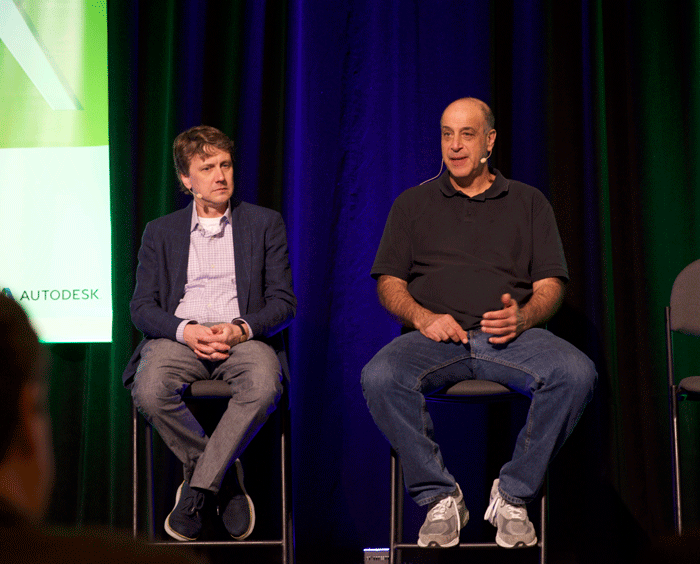
Business change
Next year Autodesk moves from individual licence sales to subscription only sales, by which time the whole model will be turned on its head.
Over time Autodesk is expecting to see a rapid increase in the amount of income from this change as money will no longer paid to resellers and distribution (read this article from Barron’s), instead the reseller gets a small fee for managing its on-going subscription base. But the subscription fee will be the same from the reseller as it is from Autodesk.
Autodesk has been weaning its resellers off the rewards of selling box products and many have moved to selling services/training and other business activities such as software development.
From talking with resellers at AU, it seems that there will be considerable consolidation in the number of resellers, which has already started and will mean that there will be fewer resellers, servicing a lot of subscribers. With lower rewards, many are de-skilling and cutting down on sales staff to rejig their business models to map their lower projected incomes – some will give up and sell their installed base to another reseller.
While there are varying views on the benefits provided by resellers within the installed base, support, installation and training will all be chargeable, one reseller told me they would even have to charge to demonstrate new software to clients. It is going to be a different world for those that rely on their local dealer for support — as it may no longer be that ‘local’. While Autodesk has been expanding its direct sales capabilities, this is focussed at big customers and many services get handed on to local resellers, of which there will be fewer.
This may be less of an issue in the US and UK Where Autodesk dominates, with highly knowledgeable customers, such as AEC and M&E. But in the markets where Autodesk is in a gunfight, specifically MCAD and AEC in Europe, a dis-incentivised reseller channel selling $25 a month subscription Fusion seat vs SolidWorks with its VAR channel chasing, as they still retaining decent margin, would be an interesting match. It’s going to be interesting, and Autodesk is betting on the lower subscription fee beating the competitor’s offerings.
Andrew Anagnost, senior vice-president, Industry Strategy & Marketing, has been overseeing the move to subscription. He refused to come up with a number when asked how many resellers would be lost through this business model change but agreed there would be “consolidation”.
On the fate of resellers, he replied, “There are already partners out there that have moved over 60% of their new run rate to our new business model. What they are asking from us is for more stuff like Forge, they want development platforms and they want a way to connect processes and make things work and deploy these new types of solutions in their customers. These are the partners we are going to invest in and build our ecosystem.
“You are right, in the new world where we are moving towards subscription for everything, some partners who made their business from just turning the crank, answering phone calls… I think it’s going to be tough for them, that’s the reality. We told them over and over. Our best partners are already figuring out what they need, they are asking us for it and we are delivering it. The more capable our partners get with the Forge platform, the more business they are going to have.
” For end-users that rely on the local reseller channel this could impact any level of ‘free’ help on offer, access to on-site demonstrations, training and potentially a change in reseller. Mr Anagnost seems to be blurring the lines on what Autodesk wants from its future channel, more developer than product sales.
Conclusion
As usual there were plenty of great talks, events, demonstrations and opportunities to socialise in the semi-twilight craziness that is Las Vegas. The Stormtroopers tried to control the situation but I suspect they were slightly undermined at how easy it was for us to send the plans for the Death Star 4.0 to everyone in the galaxy, at once, using BIM 360 Docs.
Autodesk is still developing a lot of capability in the background, which means the subscription features being added may not exactly excite the hardened users of products, but Dreamcatcher in particular really promises a completely different type of design process in the not too distant future. Having the computer model an idea, and help decide which aesthetic solution of the thousands instantly tested is best before sending it off for fabrication, is going to be the norm for future generations. There is no doubt that Virtual Reality is coming and will explode into consumer and professional markets this year. If you are making 3D models now, this is great news. If you are producing 2D drawings, the gap between the capabilities of design firms will be even greater.
Autodesk continues to move to cloud and subscription and this year is D-day for its business model to flip from perpetual licenses. I can’t explain just quite how a big move this could be and will impact customers in terms of long term cost of ownership in exchange for benefits in short-term flexibility. There is no real choice in this, the best thing to do is to make sure that your business extracts the maximum value of the software and services contained in the subscription. As the suites contain multiple products, do not skimp on training. Skills in using multiple software packages is becoming increasingly essential for improving any firm’s capabilities and ultimately competitive edge.
Q&A with the CEO and CTO
As has become a tradition at Autodesk University, CEO Carl Bass and CTO Jeff Kowalski take questions from the global press. The questions were varied and ranged from the aims of the new Dreamcatcher technology to the cloud.
On the subject of sustainability, the pair were asked about the usage of Autodesk’s sustainability analysis tools and if it is an important part of Autodesk’s sales. Bass replied, “I wouldn’t look at our investment in sustainability as one which is based on a return, financially speaking. It’s one of the areas where we think there are big problems in the world and there are a number of things that we can contribute. This can range from energy analysis of building to great examples such as ‘lightweighting’ parts with Dreamcatcher.
“There is an enormous positive long-term effect in deploying this technology. This helps our customers, which is good business.”
Mr Kowalski added, “We have given customers tools so they can understand the impact of designs, assess performance, operational cost and optimise all of that before they commit to a final design. We are now looking to take back the actual ‘in use’ operation data back into the model, so they can understand the discrepancies and ‘debug’ the design.”
On the development of Autodesk’s 3D print platform and hardware, Spark and Ember, Mr Kowalski commented, “There are three components to Spark – the API, the reference printer, the Ember, and an investment fund to boot up the ecosystem. We were successful in transferring the conversation around 3D printing from ‘trinket’ making to actual additive industrial manufacturing. The printer we developed is actually capable of producing real production parts, it’s very high resolution and open sourced. Through the fund we got to see nearly everything that was about to happen in the market and have meaningful impact.
Mr Bass added, “As a side note here, the difference between Autodesk the software giant and Autodesk the hardware start-up, the other day we had one of those hardware start-up ecstatic nightmares, that take place simultaneously, when someone came to use and asked for 1,000 Ember printers. We had an incredible desire to say yes but had no capacity to produce them!
“It’s giving us a different lens into how some of our customers live. Just to add to Jeff’s point about trinkets, we have moved from talking trinkets to Airbus flying a 3D printed part.”
The duo were asked about Autodesk’s acquisition strategy, Mr Bass explained, “ We tend to do 10-15 acquisitions a year and I put them in three buckets, small, medium and large. The smallest category is a team and technology, people who are passionate, educated, love the thing they are doing and know a lot about it. The second one is folks that have a product, or almost have a product; and the third is a company, that has multiple products, established and mature. Many of our acquisitions fall into the first two buckets. When have a desire to get into a market and the best way is to acquiring or ‘acquihire’ a team or buy a product in development to shorten our time to market. It’s fairly rare for us to actually buy a company.”
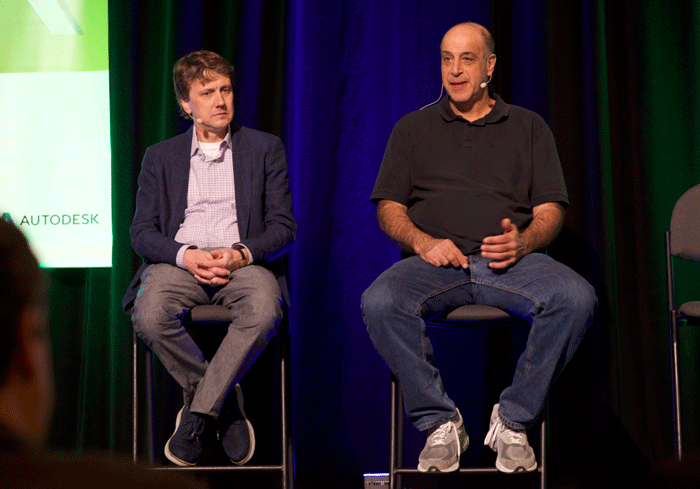
Bass was asked what the Autodesk will look like in 2020, he replied, “Our products will become indistinguishable, we will have a range of cloud-based products and services that people will put together in ways that makes sense for them, they will access and reconstruct that platform in their own way. The desktop ‘thing’ will now take place in the cloud’. Look at Fusion 360 and PLM 360, they have front ends for input and almost all the computation happens on the other side of the wire. That’s the cloud-based world of products and services that all software companies will be in.”
On the move to the cloud, Mr Bass thinks “Mobility is becoming mainstream and people are increasingly not wanting to travel with their laptops. With the advent of products like the MS Surface Pro and Apple iPad Pro, it’s becoming increasingly more obvious that tablets are taking over, even for people that use design software.” Mr Bass added that the super computer we have in our pocket is going to play an increasing role in cloud services.
The exhibition show floor
Back in the 1990s Autodesk University’s exhibition floor was packed full with developers selling plotting tools and dull, but useful, utilities for AutoCAD. Those days are long gone and the exhibition is now the real star of the show.
The developers are now showing some seriously excellent add-ons for Revit Inventor, 3ds Max and AutoCAD, together with VR headsets, laser scanners, robots, UAVs, huge CNC machines, photogrammetry solutions, 3D printers, live demonstrations and many areas displaying customers work. Given that the hours of access are restricted, it is really a shame that attendees can spend only a limited amount of time enjoying it.
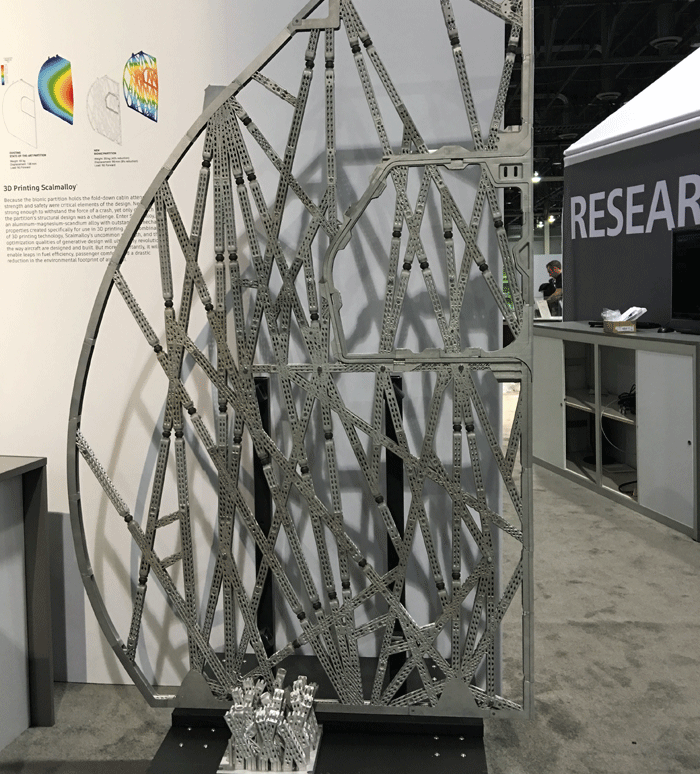
This year there was an excellent array of software exhibitors, including the subjects of many of our reviews — Newforma, Oasys, Panzura, Cl3ver, Revitzo, Sefaira, Solibri, Synchro, ClearEdge 3D and COINS to name but a few. Each Autodesk division also had huge areas for demonstration of their software.
Hardware is always a big component at the event. 3D printers were everywhere, naturally including Autodesk’s own Ember 3D printer.
Workstation technology was in full force with HP, AMD, Dell, Intel, Nvidia, Lenovo, BOXX and others showing off their latest and greatestdesktop and mobile machines, CPUs and graphics cards.
There was also a strong presence from the up and coming ‘virtual’ players such as Frame, Citrix and VMware looking to get current desktop software in the cloud. Frame showed Revit running in a browser on an iPad Pro, MackBook Air and Chromebook and announced that Autodesk had certified Revit and AutoCAD to run on its cloud platform. Laser scanners and data capture devices were everywhere, with UAVs and measuring devices from Faro, Topcon, Leica, Z+F, Skycatch (which Autodesk recently invested in), Riegl and a cool sub-$5,000 handheld 3D capture solution from dot product. Autodesk is now also generating 3D models from underwater SONAR data.
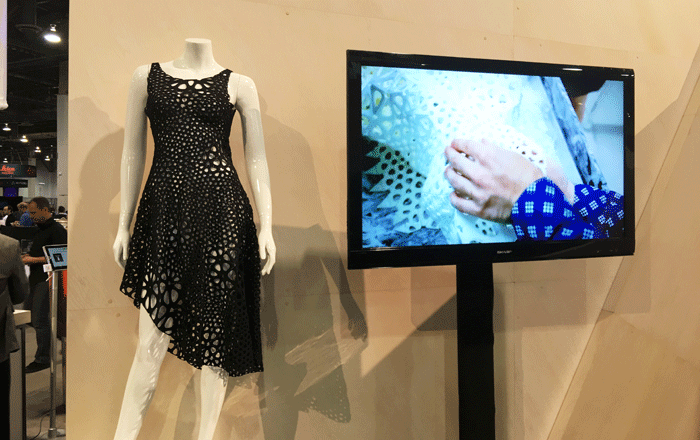
There were plenty of examples of designs created using generative design. There were lots of sensors, showing possibilities of the Internet of Things, the Airbus component designed with Dreamcatcher and 3D printed in Titanium was also on display, together with 3D dresses and generatively designed bicycle components and a 3D printed car parts.
We discovered a huge ‘robot’ that could make cocktails, robots weaving structures, robots drilling metal. There were Universal Robots that were being taught how to move without programming but by human positioning of arm positions through waypoints.
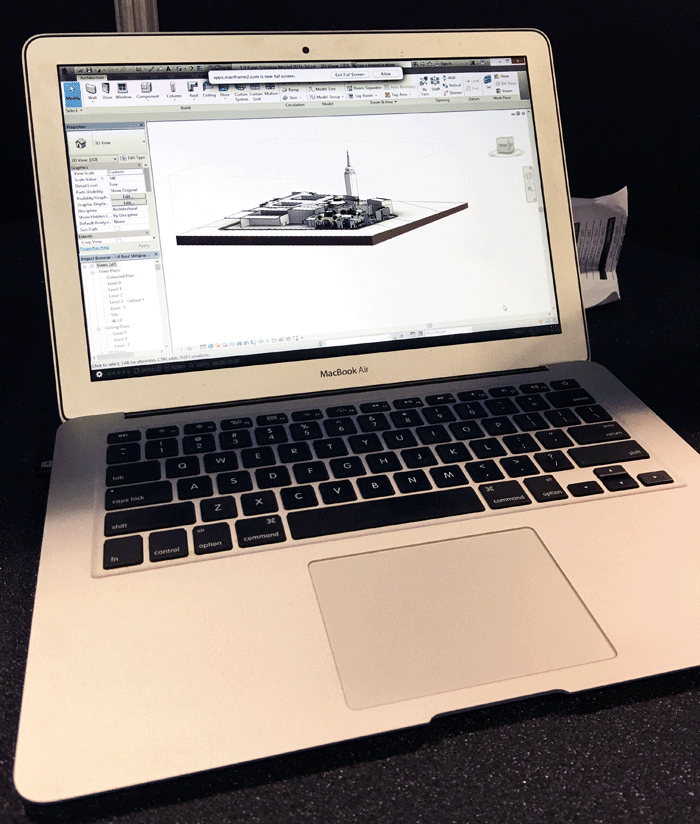
Six random facts we learnt at Autodesk University
1. Autodesk hires ‘young people’ to look at Autodesk solutions and interfaces with ‘fresh eyes’ and to compare them with competitors products.
2. CEO Carl Bass gets 98% excited by new technology but there’s always 2% that “creeps him out”. “Bad people do bad things” with any technology, he said.
3. CTO Jeff Kowalski admits that a few years ago they had taken a 3D printed gun to a conference in the UK and waved it around on stage to show technology can be used or abused.
4. While Autodesk had been developing software in China for ten years and has many customers there, it is “not the easiest place to do business”.
5. In response to Russia banning state-owned firms from buying foreign-made software, CEO Carl Bass says that all government procurement is “incredibly short sighted and about the most stupid thing that anyone can do in the IT realm, should that be for security concerns or to support the domestic software industry.”
6. Carl Bass owns a drone and thinks the big benefits are going to come from industrial uses.
If you enjoyed this article, subscribe to AEC Magazine for FREE






